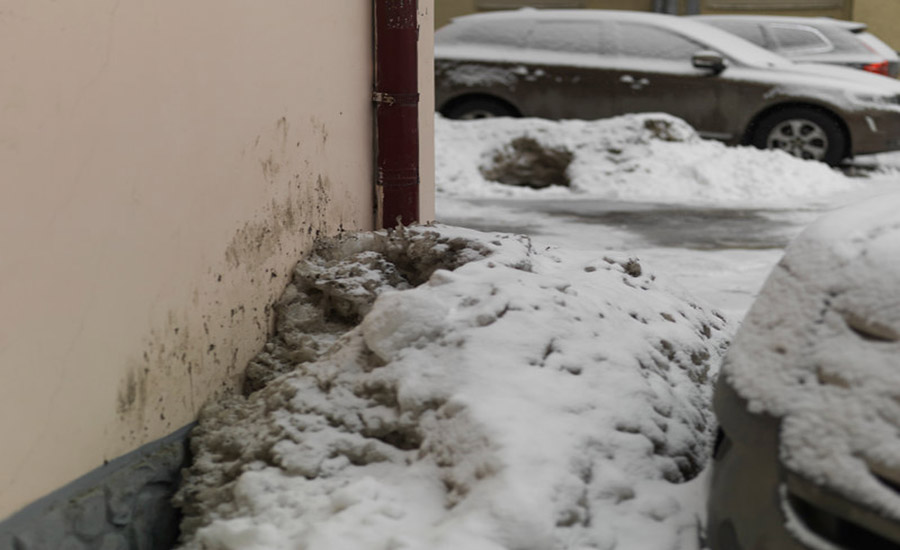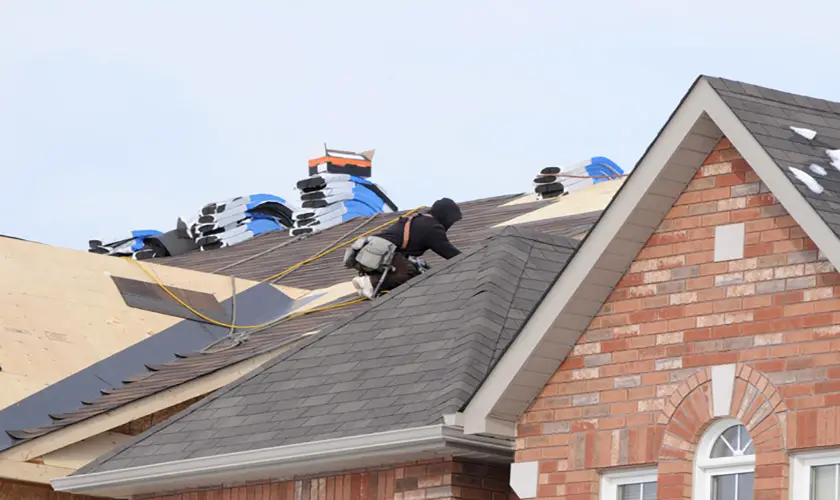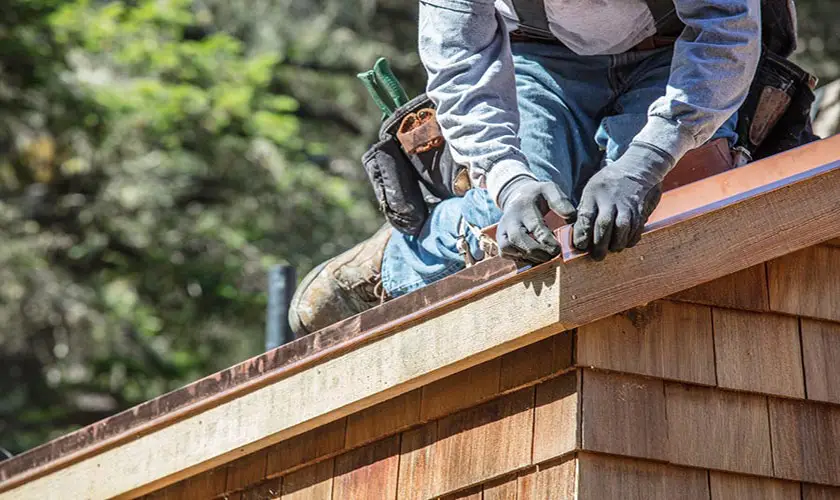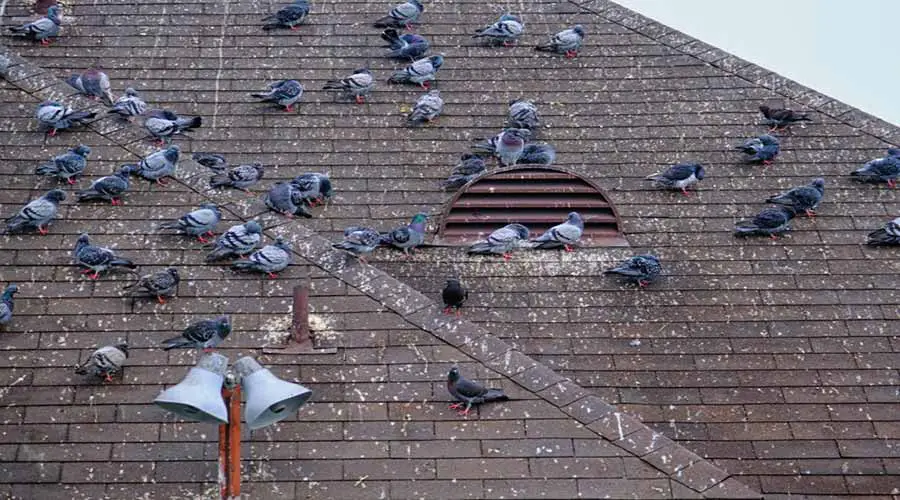
Downspouts are crucial elements in a building if you do not want water damage to ruin your home. With efficient downspouts, you can avoid costly repairs to the foundation of your house. Unfortunately, there are times when these pipes may not work optimally. Winter is one of those times. A single concern that plagues many homeowners who may be considering underground downspouts is:
Do underground downspouts freeze? What do I need to know and do when they freeze?
Underground downspouts will freeze below the minimum temperature threshold of 20 degrees Fahrenheit. That typically happens in the dead of winter when temperatures plummet. However, your downspouts will normally function if the pipes are insulated or your heating is on.
This guide will explore how underground downspouts freeze and how to keep them from freezing. Also, it will answer whether it is a good idea to bury your downspouts.
Do Underground Drain Pipes Freeze?
Experts have found that ice begins forming in underground drain pipes when the temperatures dip to 20 degrees Fahrenheit and below. Once ice forms in one section of the pipe, it spreads to the remainder of it. And that leads to excessive water pressure.
Too much water pressure causes the pipes to burst. That is why burst underground drain pipes are synonymous with freezing temperatures.
Frozen underground drain pipes are a frequent problem in the South of the United States. Because building practices typically may not consider occasional sub-freezing temperatures since the south features warmer temperatures than the north. As a result, these underground pipes are not adequately insulated.
On the other hand, the North of the US is cooler and experiences intense winters. The rule of thumb in this region is to ensure that underground drain pipes are insulated, making them less vulnerable to dropping temperatures. That means frozen pipes are less of a problem in this region.
However, regardless of the region, pipes placed in vulnerable locations will freeze when temperatures fall below 20 degrees Fahrenheit.
Bury your downspouts 12 to 14 inches deep into the ground to keep them far enough from the harsh conditions of winter.
How Do I Keep My Buried Downspouts From Freezing?
1. Insulate The Pipes
You have to use specialty insulation to protect underground pipes. Using standard home insulation will not work because it loses its insulating capability when underground due to compression. Compression robs the insulation of the air barrier that protects the pipe from the elements.
Insulation like Armaflex Tuffcoat can protect your underground pipes to prevent freezing when temperatures drop.
Also, ensure that your home’s crawl space or attics are insulated from the cold. If these spaces are poorly insulated, they can drop severely in temperature, impacting the temperatures of the pipes underground, even if they have insulation.
2. Pour Hot Water Down the Downspout
Climb a ladder and pour hot water down the spout to thaw out the ice inside it. Pour the water from the top opening of the spout.
The hot water will break up the icicles forming and thaw some of the ice build-ups.
Alternatively, you can connect a hose to your hot water faucet and let it run for a while.
3. Wrap The Downspout With A Heat Cable
Ensure the heating cable is self-regulating so that it doesn’t become a hazard when someone gets close to the downspout.
The cable stays on to prevent any ice build-up as it snows. You can also place the cord inside the downspout.
However, do not place the cable inside the downspout if the pipe already has ice. That is because ice thaws slowly, forming a pool of water, and these cables do not do well when immersed in water.
Some people prefer to run the hot water outside the downspout near the accumulated ice.
Do not, however, use brute force to break the ice. You will damage the spout. Also, avoid using blowtorches. Instead, consider using a blow-dryer because it has consumer-grade heat that will do a great job of thawing the ice gradually.
A heating system specifically for the downspout and gutters will help prevent the ice and snow mounds from getting into these pipes. The system heats the snow as soon as it hits the roof, turning it into water that easily flows down the gutters and downspouts.
There are several options on the market, including Helmet Heat®
4. Use A Heat Tape
A heating tape is a tape developed to produce heat. It looks like an extension cable connected to a power source wrapped around the downspout.
Plug one end into the power source and follow the manufacturer’s instructions in positioning the rest of the cable.
Please turn on the tape an hour or two before it snows.
Make sure you choose the appropriate heat tape for the material featured on the downspout. Heat tapes are compatible with plastic, metal, copper, and galvanized downspouts.
Is It A Good Idea To Bury Downspouts?
It is a good idea to bury your downspouts in an area with uneven terrain, or the soil is not porous enough.
The downspouts drain water away from your house, preventing damage to your home’s foundation and structural soundness.
You may connect your downspout to a French drain to enhance the drainage. The French drain allows you to throw water from the gutters further away from the house. As a result, you do not have to worry about water pooling in the yard.
Buried downspouts also:
- Promote yard drainage
- Prevent the formation of icy spots in winter
- Keep the yard neat with no drainage mishaps
Your contractor will map the best possible route for the downspout. This should be several feet away from your home. Or discreetly into shrubbery or bushes or the sidewalk away from the house.
Should I Take Downspouts Off In Winter?
Downspouts need not be taken off during winter. Many contractors believe that it is okay to leave the downspouts alone. That’s because a rise in the temperatures will restore the balance and get the ice thawing and flowing out.
So, most people adopt a wait-and-see attitude.
Besides, you can always clear the snow building up at the bottom of the downspout to resolve the freezing problem.
The problem arises when the build-up becomes too much, and even after it clears, the downspout is damaged. It is best to consult a professional plumber with experience in your locale.
These are people who know the trends of ice and snow in the area, and they can also diagnose any potential problems with the lay of your land.
If they see something of concern, they can mitigate the problem in advance with professional treatments and solutions.
If you decide to disconnect the downspout during winter, ensure that it is positioned in a section where it can drain water away from human and animal traffic for safety.
For example, do not install the downspout near your driveway or lawn. Instead, consider the back of the house.








